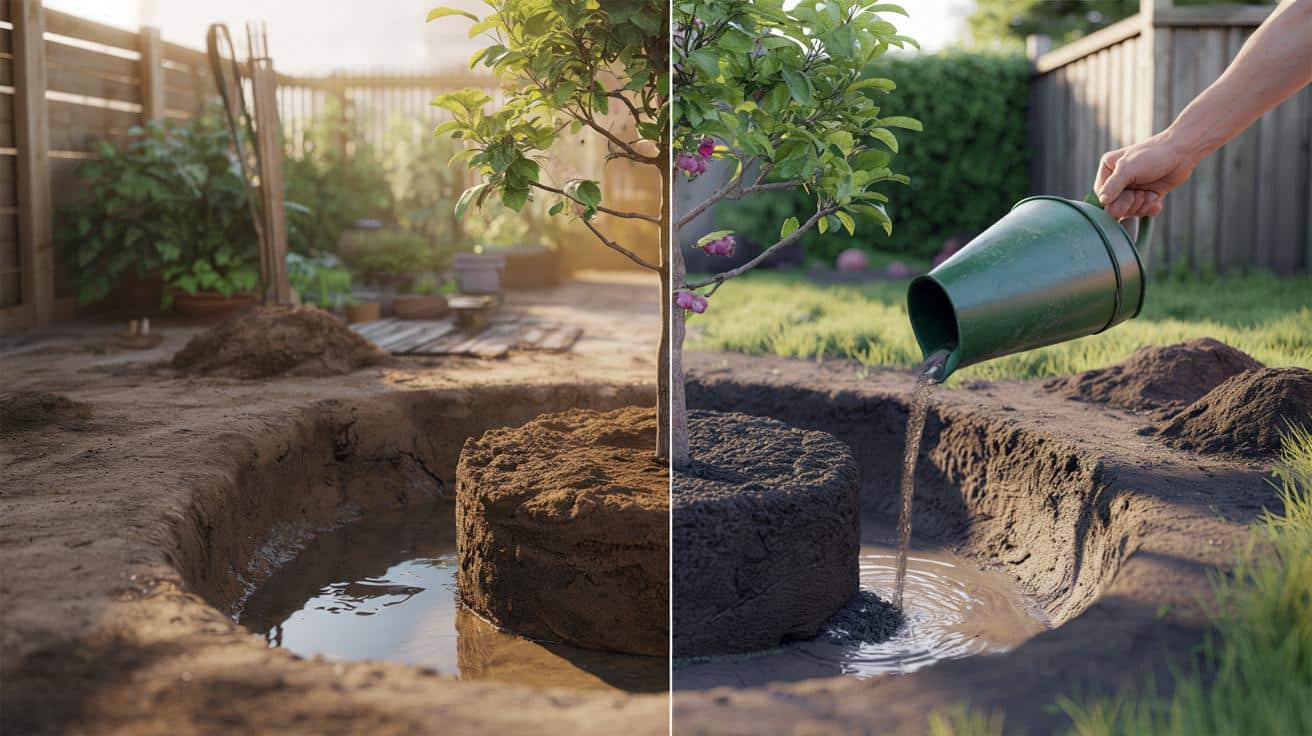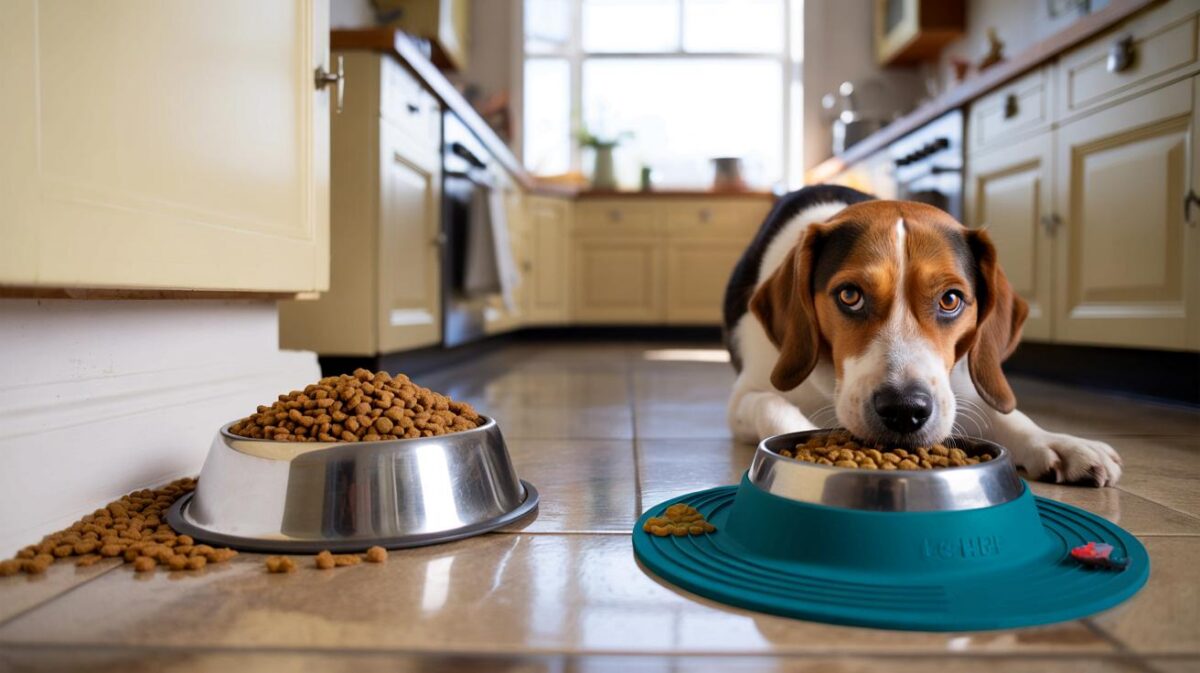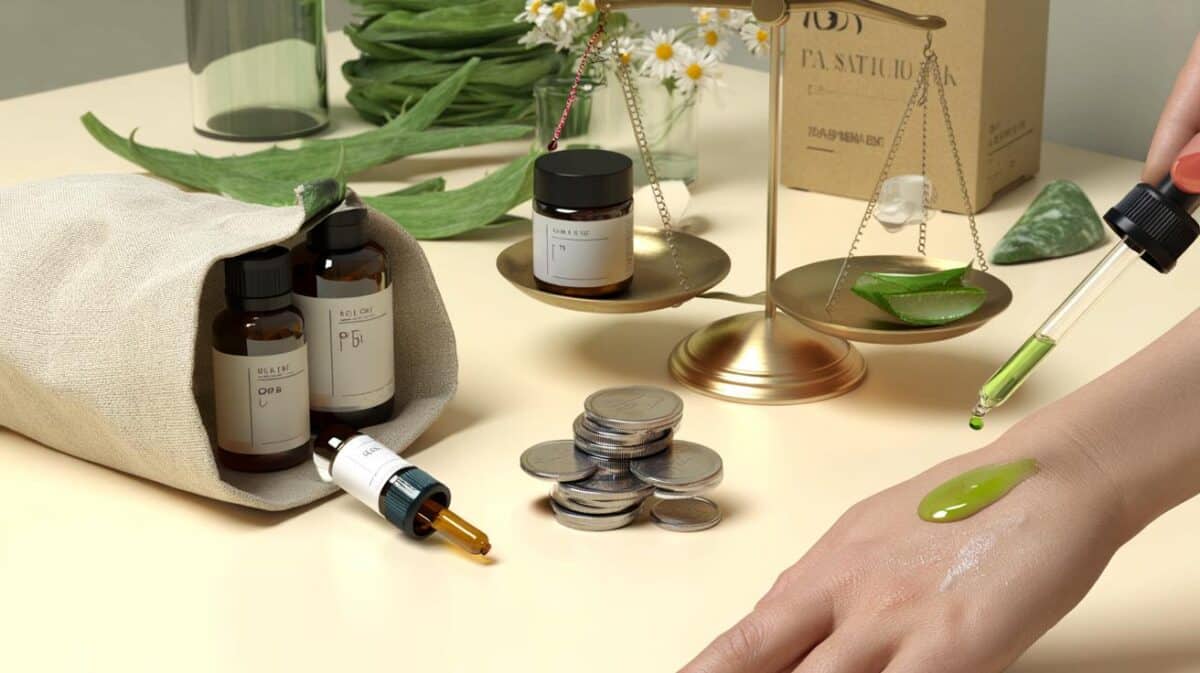A small change at planting can transform results.
Across back gardens and allotments, growers are switching to a nursery-style method that supercharges young apple, pear and cherry trees. The trick lies beneath your feet, in how you open the soil, how you feed it, and when you start.
Why copying horticulturists changes your first year
Nursery growers don’t gamble with a tight hole and a handful of fertiliser. They plan the planting site, build structure into the soil and give the roots an easy route out. The pay-off is immediate: faster root exploration, better moisture capture and stronger top growth by spring.
The simple secret behind faster growth
Create a generous, well-aerated planting zone before the tree arrives. Break compaction, remove rubble, and mix in long-lasting organic matter. When roots meet open, living soil instead of a hard-sided “pot” in the ground, trees put energy into growth rather than stress responses.
Think width and breathability: a hole at least 60 cm wide and 40–50 cm deep, with friable sidewalls and a living, nutrient-rich backfill.
Common mistakes that stall young trees
- Digging a narrow, smooth-sided hole that acts like a bucket and drowns roots.
- Burying raw manure or strong nitrogen under the rootball, which scorches new roots.
- Planting too deep and covering the graft union, causing weak growth or suckers.
- Skipping a proper soak at planting, so soil pockets stay full of air rather than moisture.
- Leaving bare soil over winter, which dries, caps and chills the root zone.
October advantage: banking growth before spring
In much of the UK, October offers warm soil and regular rainfall. Roots remain active well into November in the South and early winter in milder coastal sites. Planting now gives your trees 8–10 weeks to knit into the ground, so they launch hard when daylight returns.
A simple two-week prep that pays for years
Mark each planting spot a fortnight before planting. Open the ground to full width and depth, then backfill loosely to let it settle. Water the area to kick-start microbes. On planting day, the soil handles like crumbs rather than clods, and roots slide straight in.
Prep two weeks ahead, let the soil settle, then plant into structure rather than sludge or voids. It’s the quiet head start that shows in April.
The pro-level planting hole
Think of the planting hole as a launch pad, not a socket. You’re engineering a micro-environment that feeds roots steadily, drains well, and stays open to air.
Dimensions and preparation
For bush and cordon trees, go at least 60 cm wide by 40–50 cm deep; for half-standards, increase width to 75–90 cm. Loosen the base with a fork rather than polishing it with a spade. Rake the sidewalls to avoid a glazed surface that repels roots.
Backfill with a balanced, peat-free mix that holds moisture but doesn’t slump. Work soil in around the roots with your fingers, not your heel, then settle it with water rather than heavy stamping.
Nutrition without the burn
Feed for the long term, not a fortnight. Blend a backfill using:
- One-third well-rotted compost
- One-third site soil (stone-free, crumbled)
- One-third quality peat-free multipurpose compost
Add a slow, gentle mineral source such as 80–120 g bone meal or horn meal per tree, mixed into the backfill rather than dumped beneath the rootball. Optional: dust roots with mycorrhizal fungi to accelerate early uptake in poor soils. Avoid fresh manure or high-nitrogen pellets at planting; they spur soft, sappy growth and root burn.
Mix feed throughout the backfill, not under the rootball. Water to settle, don’t stamp to compact. Aim for air, moisture and steady nutrition.
Aftercare that locks in the gains
Planting only sets the stage. Early watering, mulching and light training amplify the advantage you’ve created underground.
Water, mulch, stake and watch
- Water: give 10–15 litres immediately after planting, then 10 litres weekly in dry spells until leaf-fall. Resume in spring as growth starts.
- Mulch: apply 5–8 cm of leaf mould, chipped wood or straw, keeping a 5 cm gap around the trunk to prevent rot. Mulch stops winter heave and keeps microbes busy.
- Stake: for windy sites, drive a single low stake on the windward side and tie with a soft, figure-of-eight tie. Keep the trunk flexible so it thickens.
- Guard: use a spiral guard against rabbits and strimmers; check for rubbing each month.
Reading the signs in spring and boosting growth
Plump buds by late March show good establishment. By May, you want extension shoots 15–30 cm long and leaves with a rich green. If growth looks shy, top-dress with 2–3 litres of mature compost around the dripline and water in. A light summer prune on apples and pears directs energy into the framework rather than tangled whips, laying foundations for fruiting spurs.
Quick reference: hole size by tree type
| Tree form | Typical rootstock | Hole width | Hole depth |
|---|---|---|---|
| Cordon/step-over | M9, M27, Quince C | 50–60 cm | 40–45 cm |
| Bush/fan/espalier | M26, MM106, Quince A | 60–75 cm | 45–50 cm |
| Half-standard | MM106, MM111, seedling pear | 75–90 cm | 50–55 cm |
| Standard | MM111, seedling apple/pear | 90–100 cm | 55–60 cm |
Mistakes that cost you two seasons
Planting depth and the graft line
Keep the graft union 5–10 cm above the final soil line. Burying it lets the scion root, canceling the rootstock’s benefits and slowing growth. If the soil settles, top up with mulch, not soil, so you maintain aeration.
Compaction by enthusiasm
Heavy stamping closes the pores you worked to create. Let water settle the soil, then add more backfill if needed. A firm, not hard, finish gives roots air to breathe and room to split apart the crumbs.
Extra gains you can pick up this weekend
Match rootstock to your site. On windy, dry plots, choose a slightly more vigorous rootstock such as MM106 for apples or Quince A for pears; it copes better with marginal soils and needs fewer rescues in summer. In small gardens, a dwarfing stock still thrives if you get the soil right and keep to a strict water-and-mulch routine.
Run a quick cost-and-time check. A cubic foot of quality compost and a handful of bone meal adds only a few pounds per tree, yet can save two years of waiting. Plan 45–60 minutes per planting hole, including prep, and schedule 10 minutes weekly for watering checks during the first growing season. If drought bites, swap to two deeper waterings of 15–20 litres rather than daily sips. The risk with light, frequent watering is shallow rooting; deep drinks pull roots down where summer moisture lingers.








